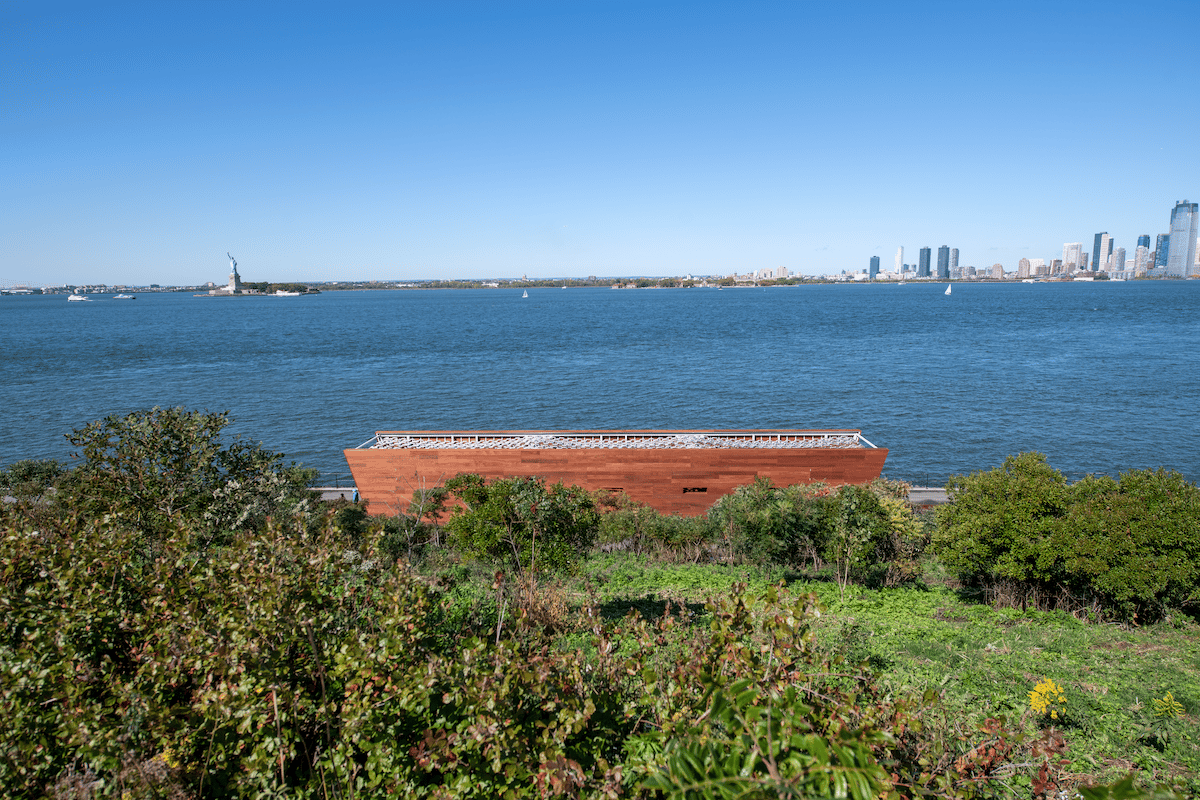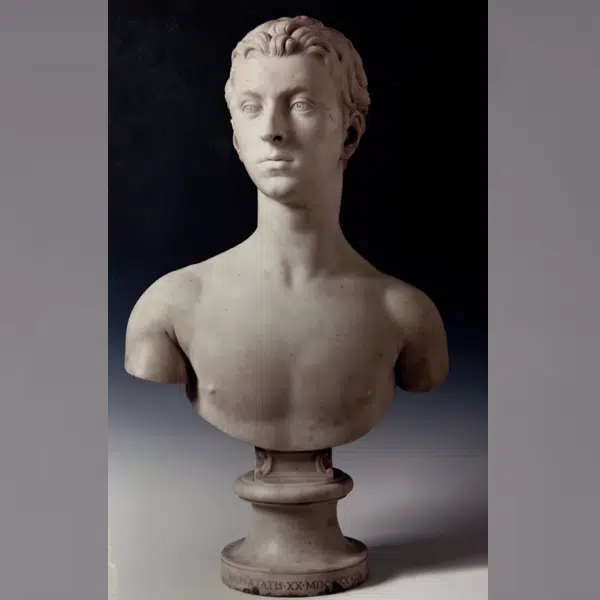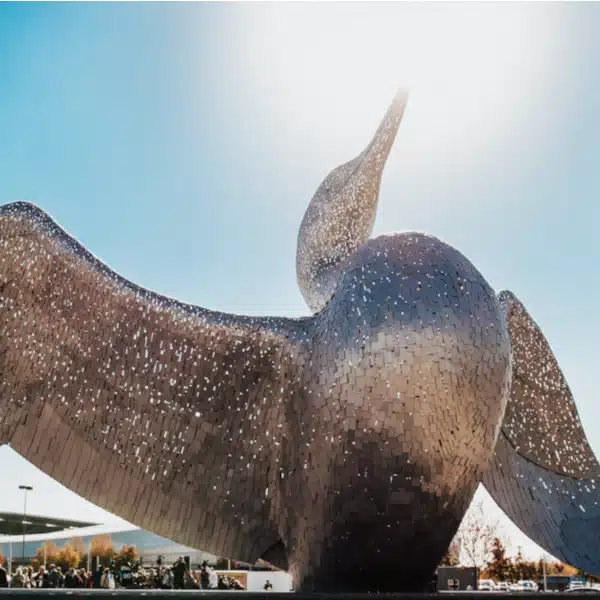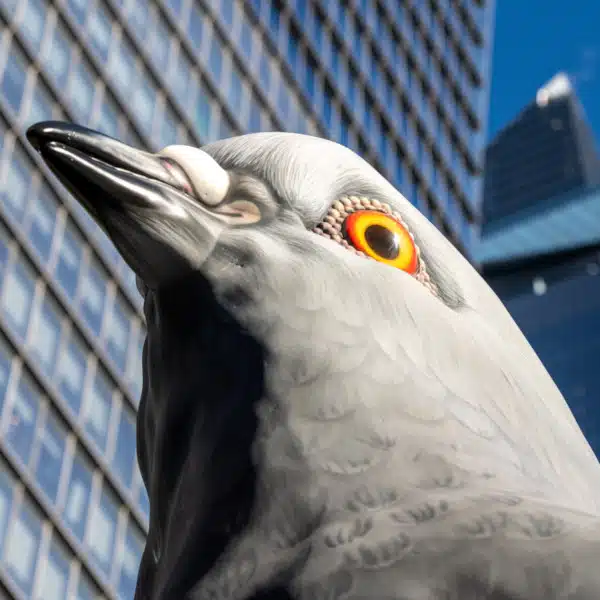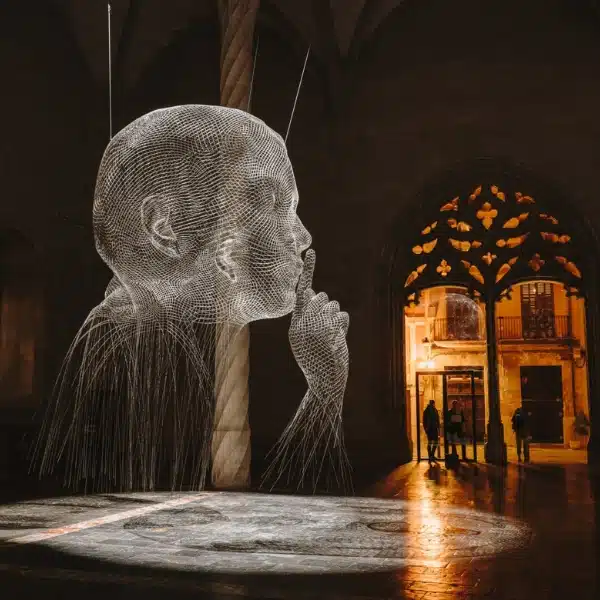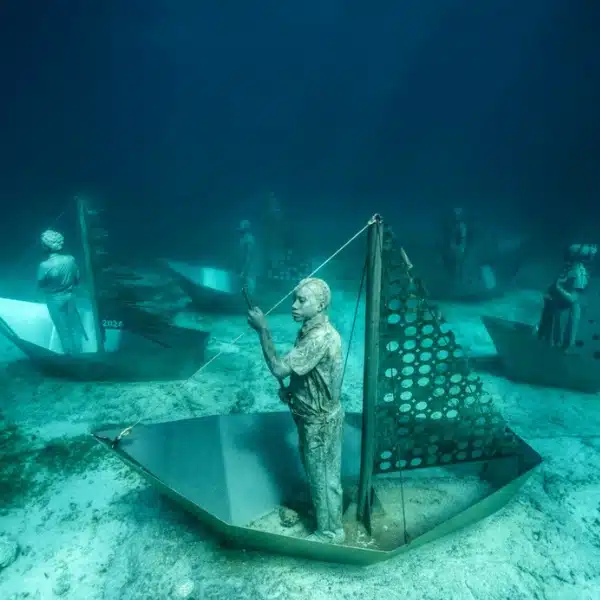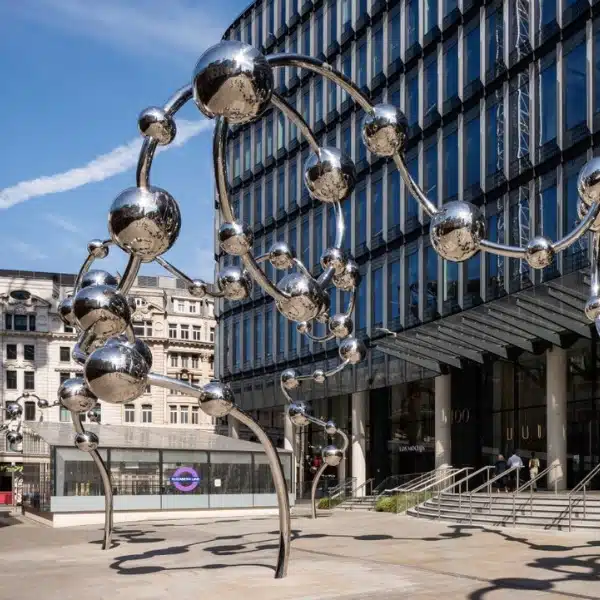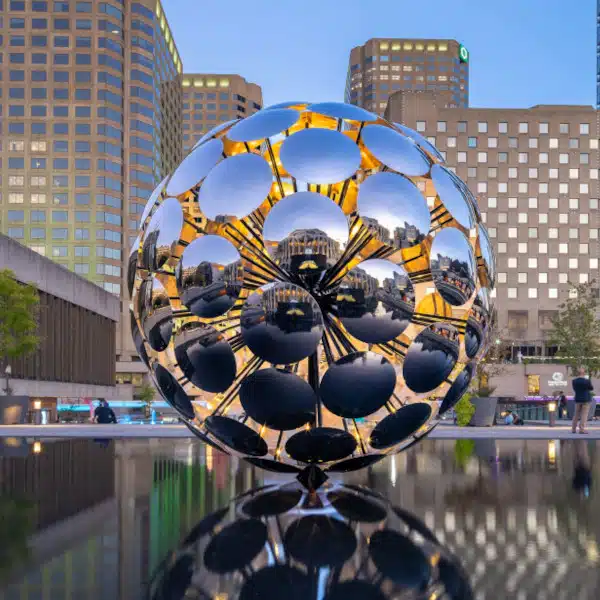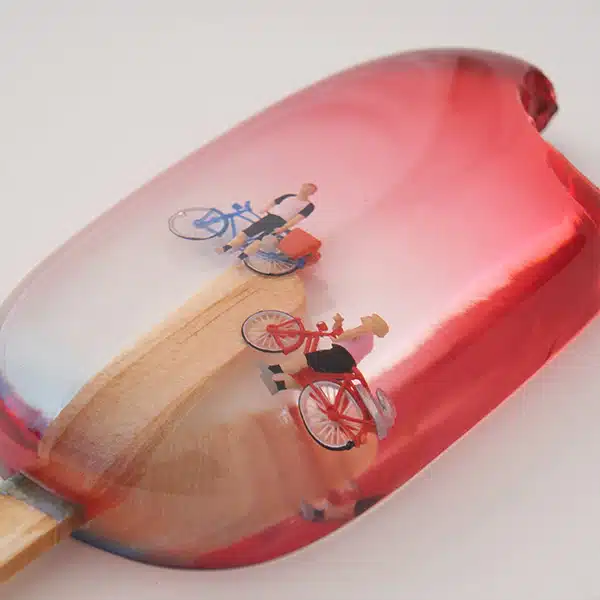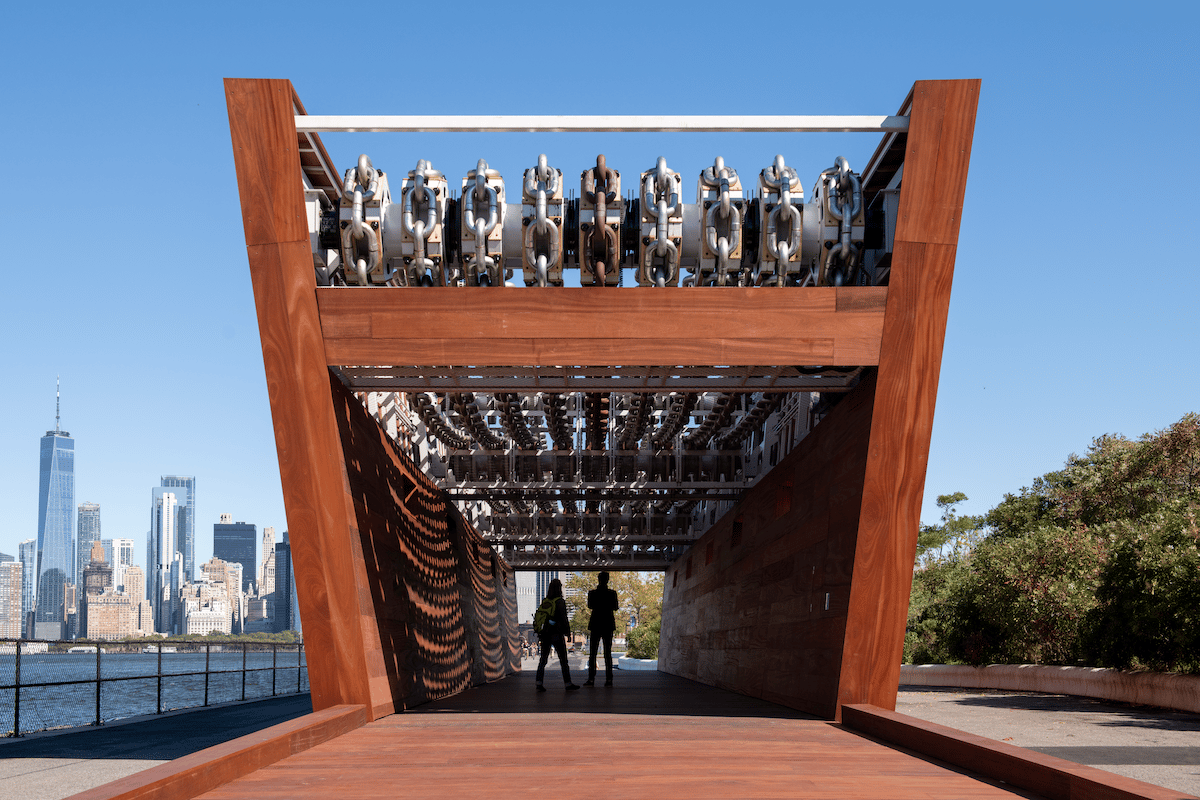
A pivotal figure in conceptual art for nearly 50 years, American artist Charles Gaines uses his art to challenge notions of aesthetics, politics, and philosophy. For his latest project, The American Manifest, he tackles one of America's most pressing problems—systematic racism and its historical roots—which have contributed to the country's current political divide. The American Manifest is broken down into several chapters with the latest—Moving Chains—opening on New York's Governors Island.
In the making for eight years, Moving Chains is Gaines' first public art commission and it does not disappoint. The imposing, 110-foot kinetic sculpture has enormous rotating chains that recall New York Harbor's critical role in the slave trade. Each of the nine chains weighs 1,600 pounds and are supported on a structure made from sustainably harvested Sapele, commonly referred to as African Mahogany, a tree native to West Africa.
Eight of the chains move at the pace of the Hudson River's current, while the ninth chain moves faster to symbolize the ships and barges that have traveled this waterway for centuries. As visitors move beneath the chains and take in the visual and auditory experience, they are invited to remember that this river—often associated with the Statue of Liberty and freedom—was also a primary mover of slaves. In placing the work here, Gaines asks the public to reimagine their notions of how the northern states participated in—and gained from economically—the slave trade.
“I wanted the piece to address that….to address the idea that in order to produce this kind of economy, they had to legitimate [sic] slavery,” the artist shares.
After Moving Chains finishes its run on Governors Island in June 2023, it will move to the banks of the Ohio River in Cincinnati. This second location is important to The American Manifest, as this river also played a large role in moving slaves around the country.
While on Governors Island, several organizations are taking advantage of its presence to push discourse about America's complicated history with race. In Spring 2023, Governors Island Arts and Creative Time, a commissioning partner on the project, will present a conference on abolition and the limits of the law. At the same time, Black Gotham Experience, a project that reimagines spaces directly impacted by the African diaspora established by artist and historian Kamau Ware, will offer an audio tour of the pre-colonial, colonial, and post-colonial patterns that have informed a centuries-long relationship with what are known today as the East and Hudson Rivers and New York Harbor.
Moving Chains is a monumental kinetic sculpture by American conceptual artist Charles Gaines.
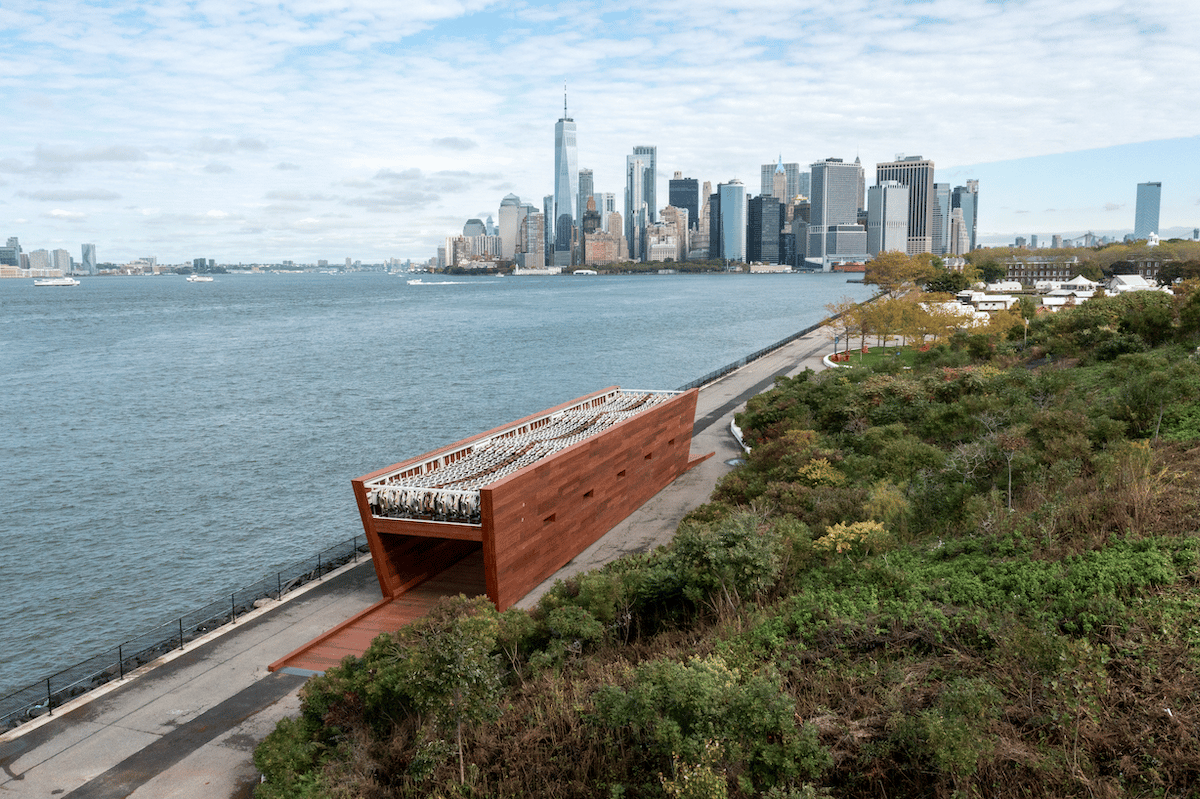
Located on Governors Island, the sculpture asks the public to consider the Hudson River's role in the slave trade.
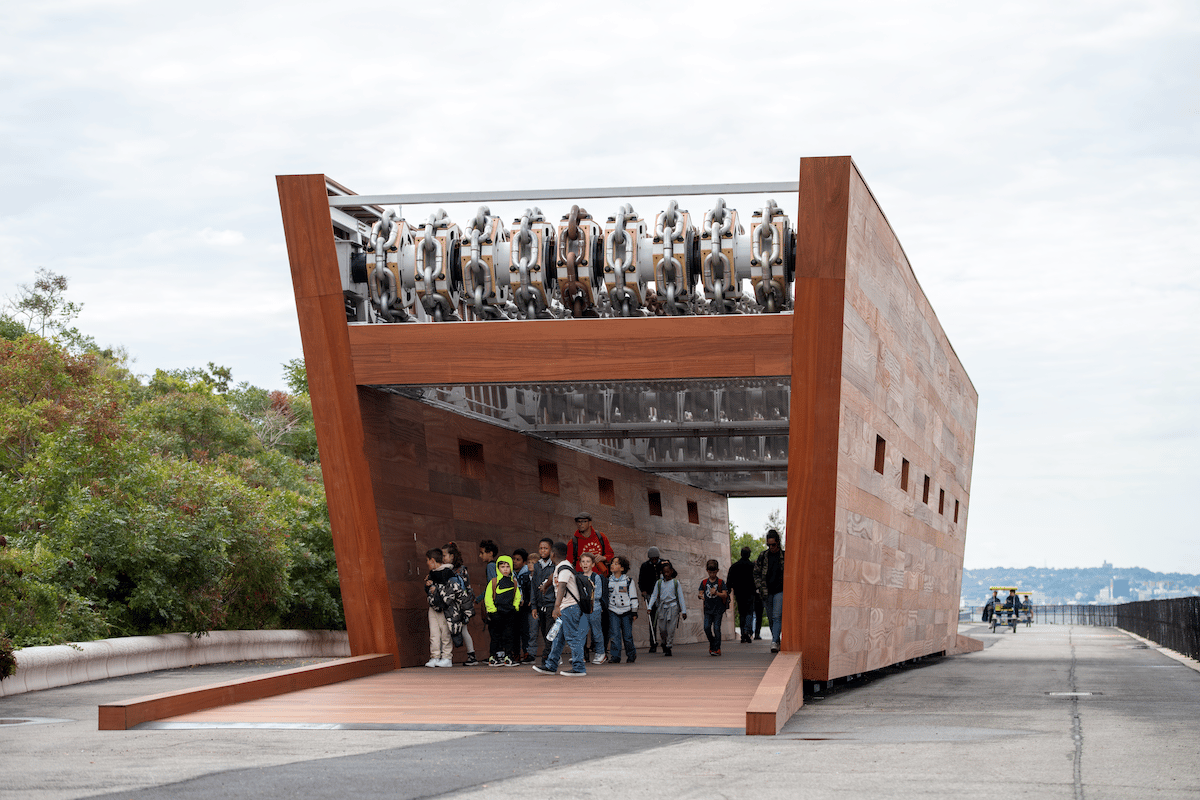
Nine moving steel chains weighing 1,600 pounds each recall the busy hum of New York Harbor.
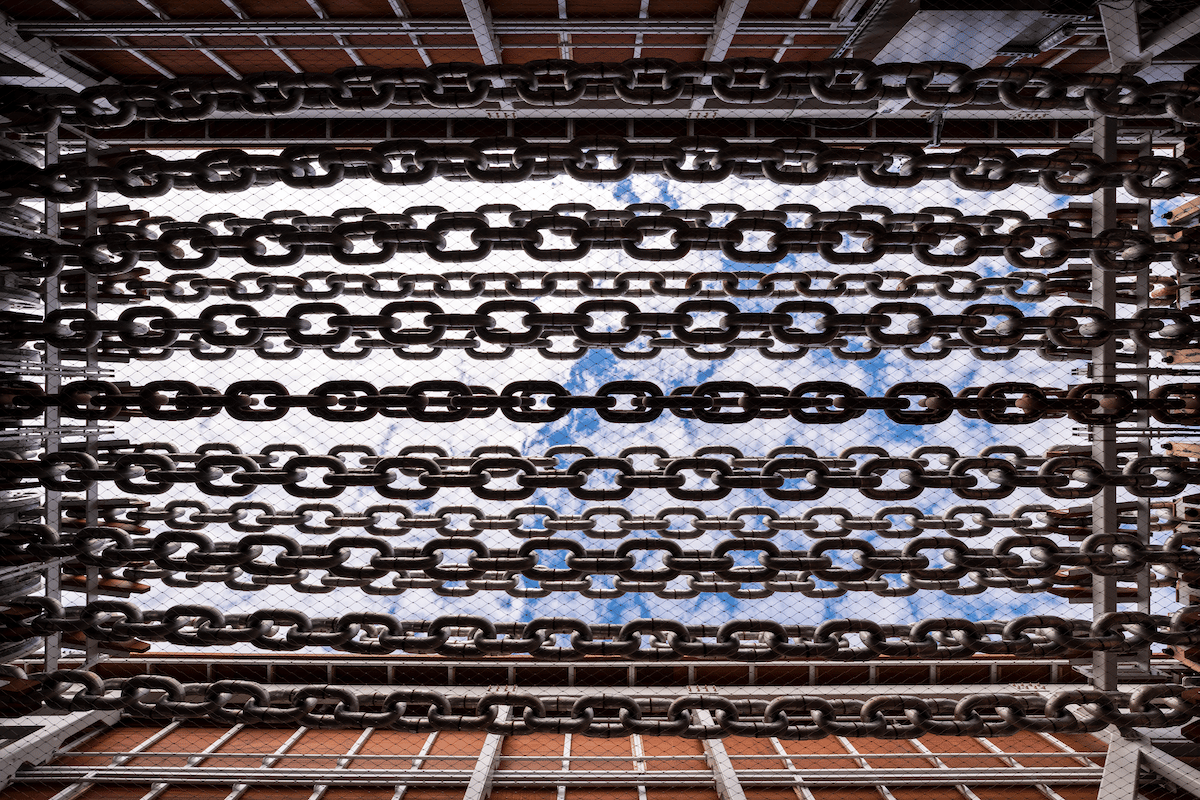
The piece took eight years to bring to life and is part of Gaines' The American Manifest project.
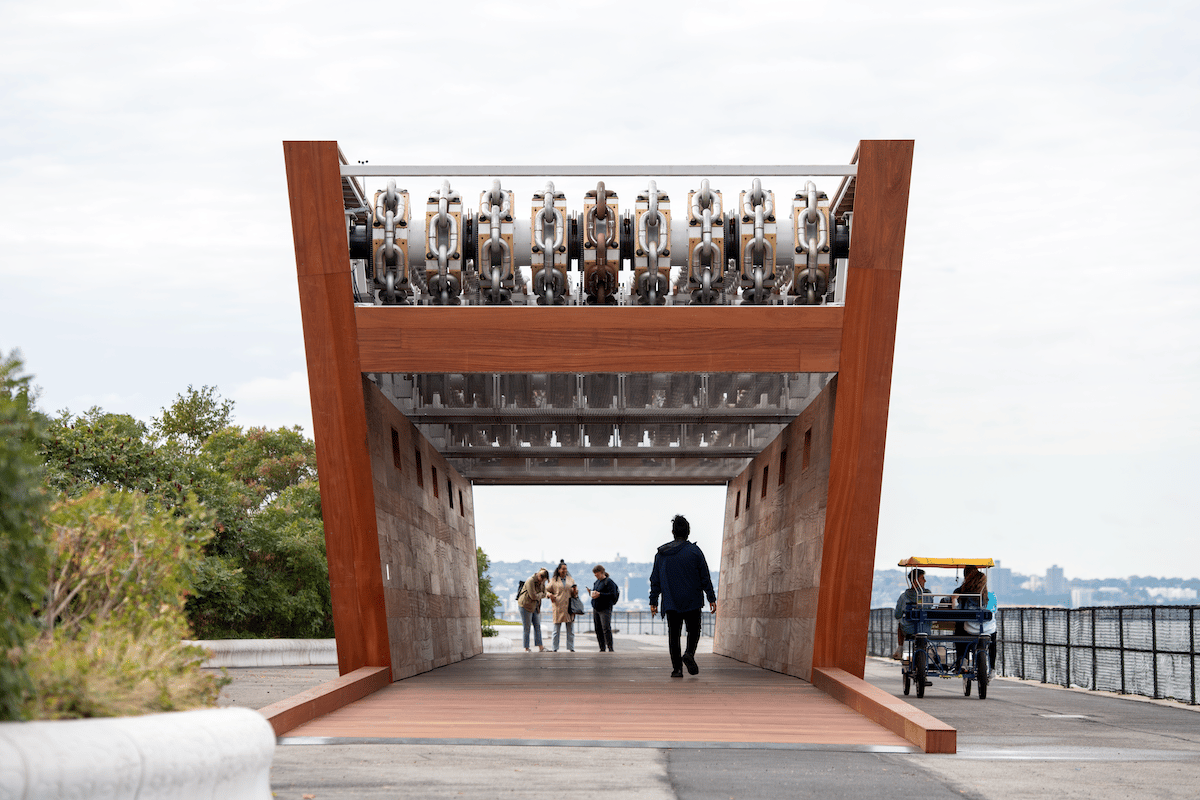
Moving Chains will stay on Governors Island until June 2023 before moving to the banks of the Ohio River.
